In the Mekong Delta, local farmers have found a clever method for catching nearly 10 kg of chu u crabs daily without needing to dig or hunt at night. With a modified mouse trap and some simple bait, they can earn half a million VND each day.
The chu u is a type of crab with a unique look: a purple body, red claws, and a spiky shell. These crabs are typically found in mudflats where rivers meet the sea or in coastal mangrove forests.
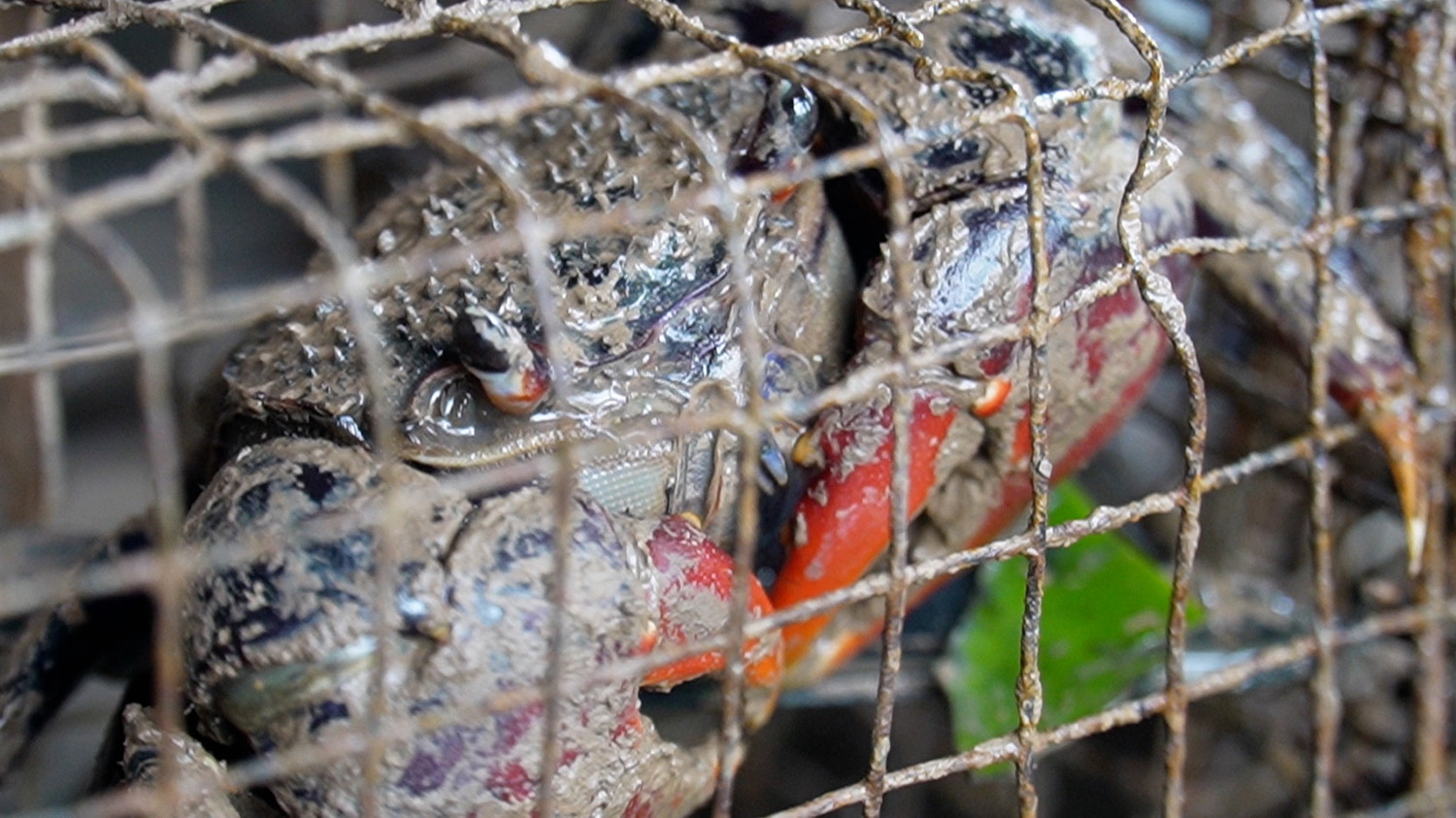
Over the past few years, the price of chu u crabs has remained steady at around 50,000 VND per kilogram. This has encouraged residents in Nam Can and Ngoc Hien districts (Ca Mau Province) to collect large quantities to sell to traders.
In the past, crab catchers had to either hunt for them by hand or dig through burrows, methods that often-yielded low productivity. Now, most locals rely on small traps like mouse traps but modified and baited with mangrove leaves, which has proven to be much more effective.
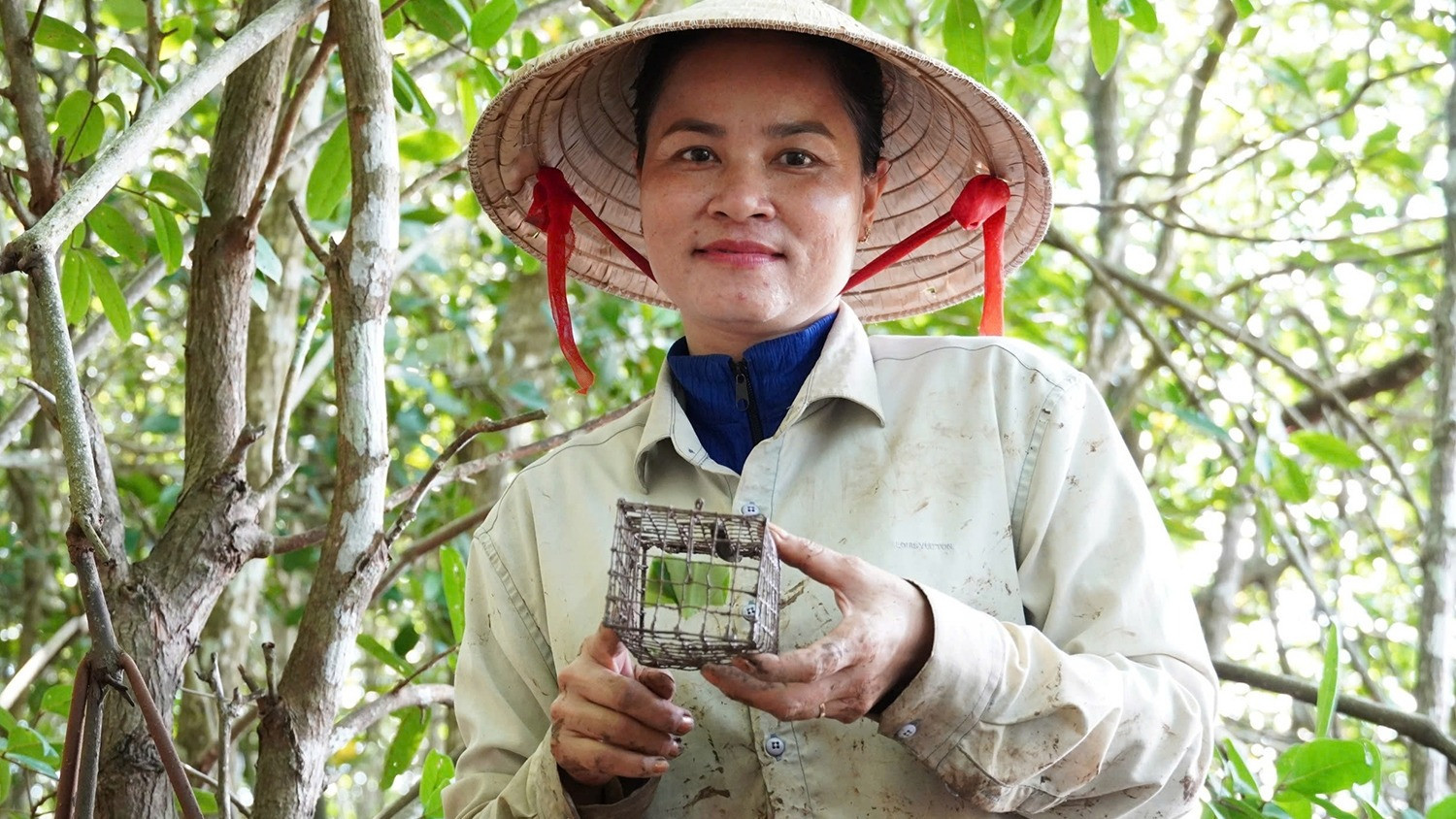 |
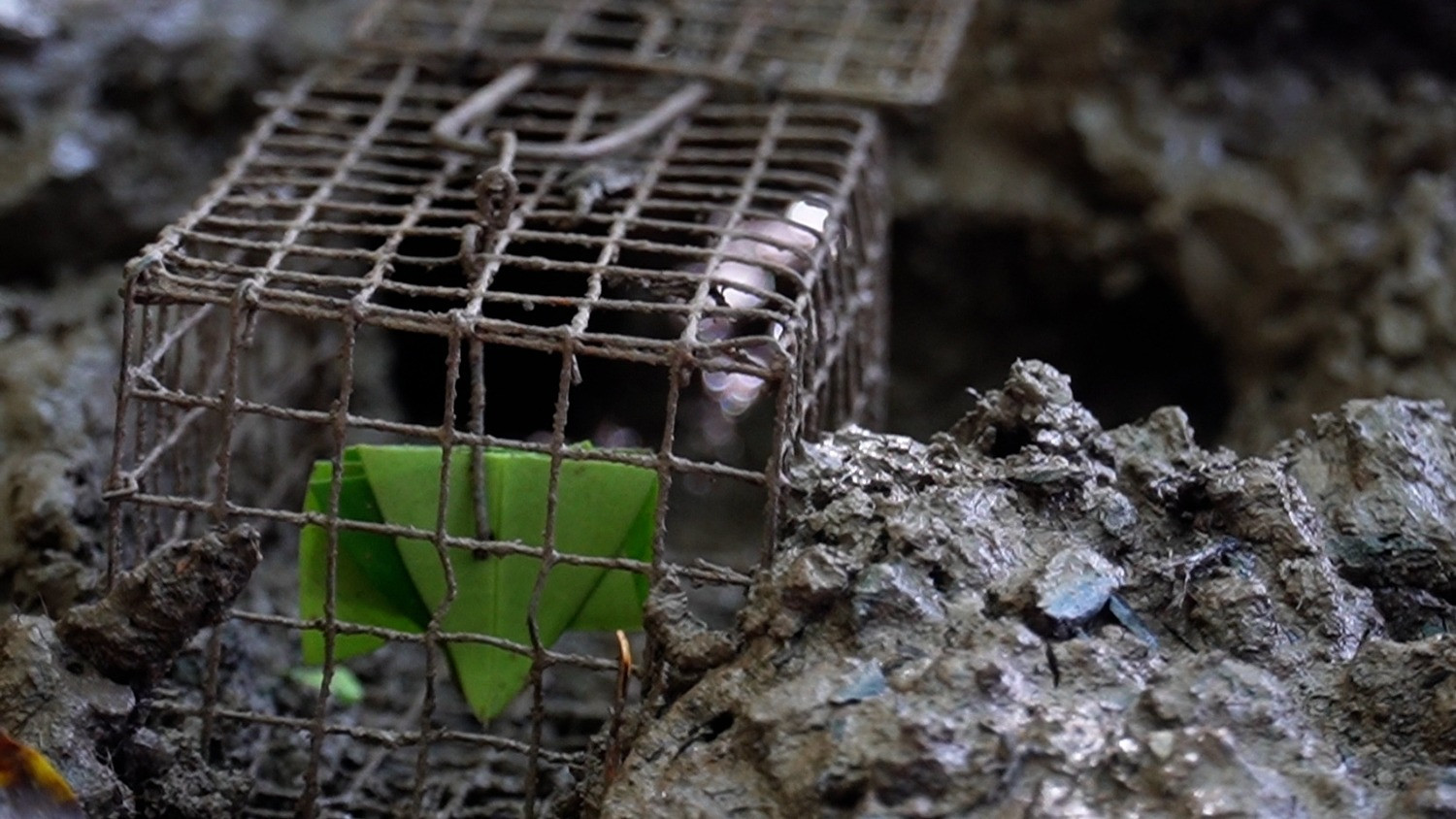 |
Nguyen Tuyet Loc, a resident of Tam Giang Commune in Nam Can District, explained that, despite being slow-moving, chu u crabs are known as the "kings of burrowing." Their complex burrows often have multiple branching tunnels that twist through dense mangrove roots, making it easy for them to hide from hunters.
According to Loc, successful crab catching depends greatly on the weather. Rain can flood the burrows, making it hard to locate the crabs.
“If you see a burrow with a wide entrance, deep soil deposits around it, it usually means there’s a large chu u inside. I set the trap there, and when the crab comes out to eat, it gets caught," Loc shared. “For crabs deeper in the forest, I flatten the top of the entrance when the tide is high to increase my chances.”
 |
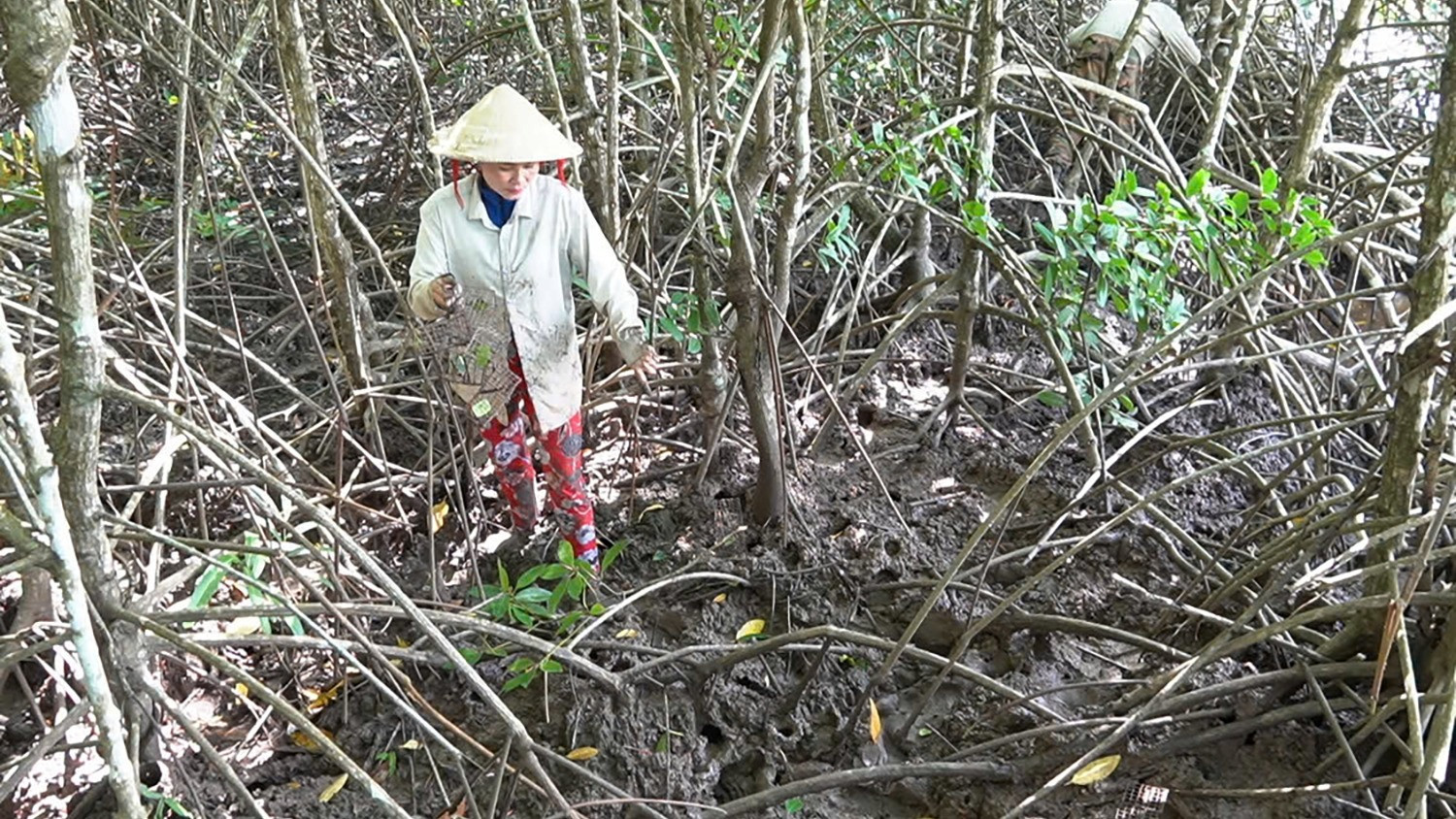 |
By 8 a.m., Loc usually sets out to place traps and returns four hours later to check them.
“I set around 250 traps a day, which brings in close to 10 kg of chu u,” she said.
While it sounds simple, Loc explained that setting traps requires knowledge of the crab’s burrows, which are often near riverbanks and dense areas around mangrove and nipa palms.
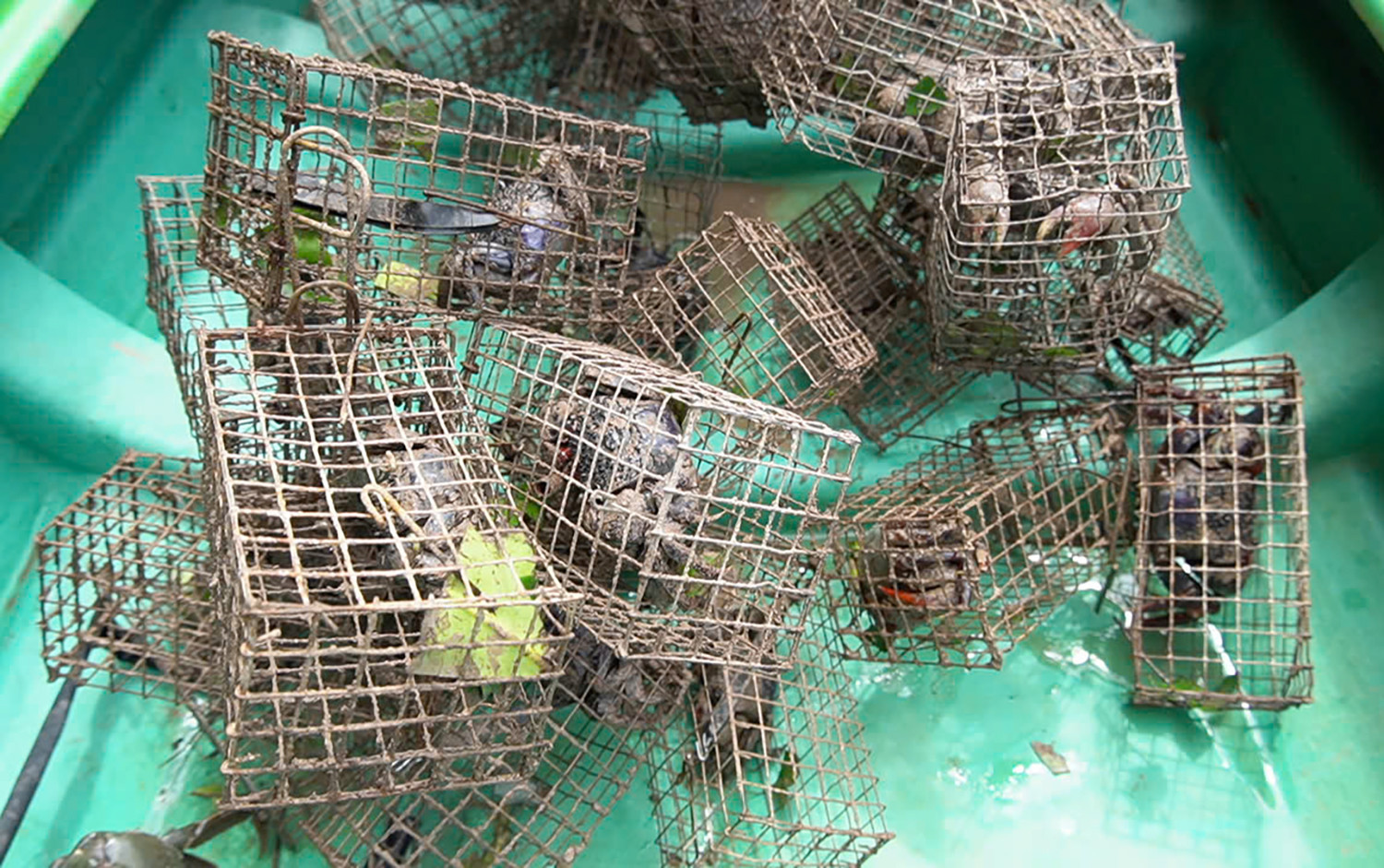
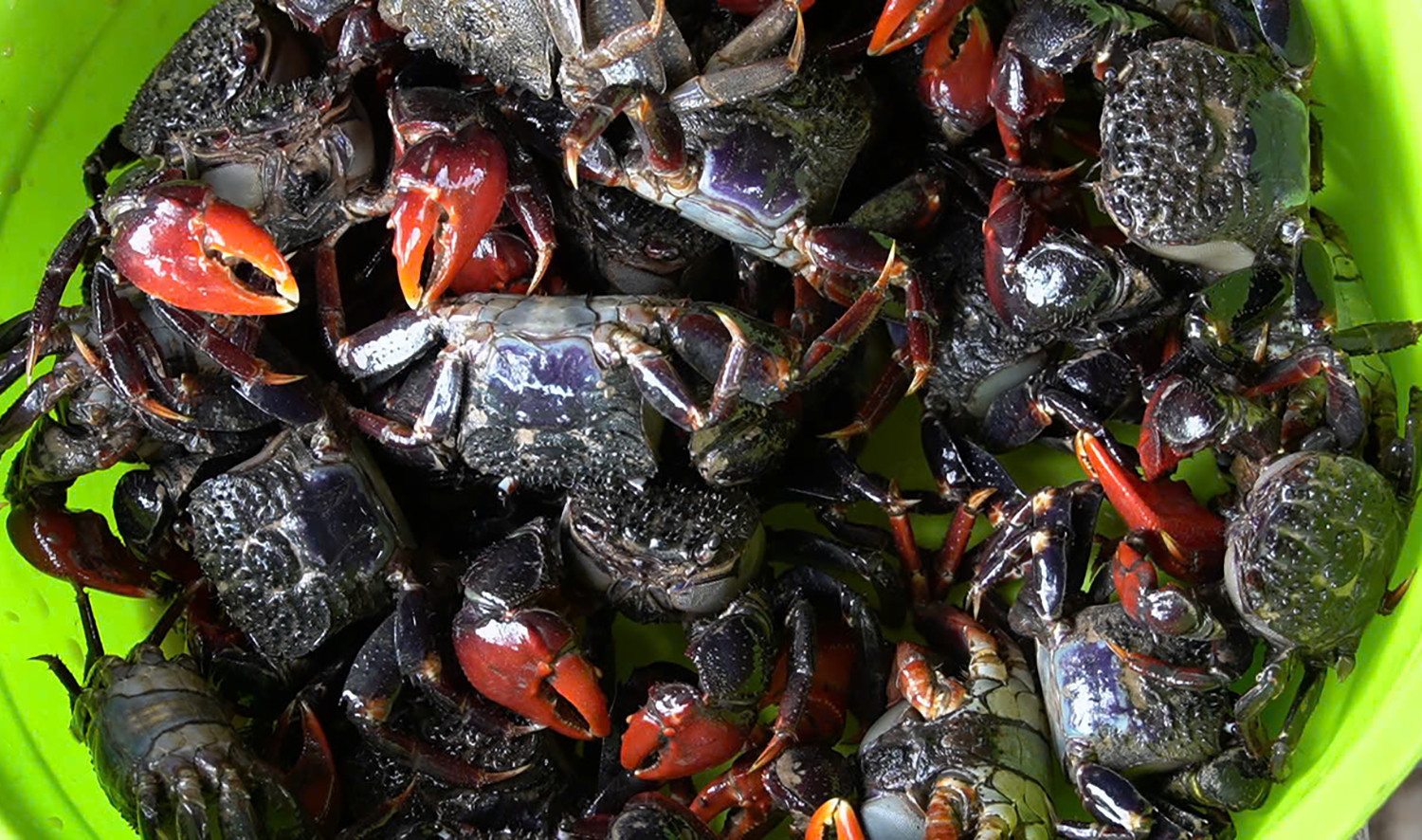
After catching the crabs, they must be preserved carefully. Locals place them in ice immediately to prevent them from damaging each other. After cleaning, traders buy the crabs for around 50,000-65,000 VND per kilogram.
Locals note that chu u crabs are at their best from September to December (lunar calendar), when the crabs are filled with flavorful meat and are most aromatic.
Tran Tuyen